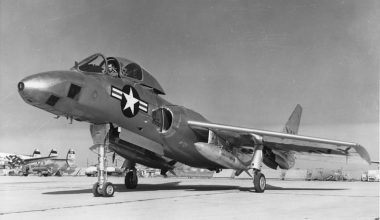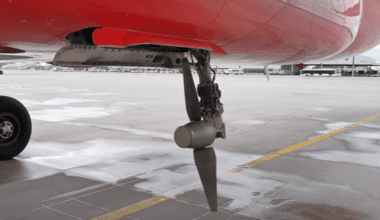Pakistan International Airlines ( PIA Airlines ), Flight PK 268 was Nepal‘s worst aviation crash killing all 167 people on board which is still considered an unknown mystery.
On 28 September 1992, the flight was operated with 16 years old Airbus 300B4-203 aircraft registered as AP-BCP. The flight originated with 155 passengers and 12 crew members from Jinnah International Airport, Karachi to the Tribhuvan International Airport, Kathmandu. The aircraft crashed during the approach at 2.30 pm approximately 7,280 feet into the side of the 8,250 ft hill Bhattedanda which is 9.16 nautical miles away from the airport.

The Pakistan International Airlines PK268 struck terrain at 7,280 feet above sea level on the appropriate final approach track at 9,16 DME. During that DME, the aircraft should usually have been down to 9,000 feet, but the minimum safe altitude was 8,200 feet. During the time of impact, the slats, flaps, spoilers, and landing gear were correctly positioned for landing. The wings of the aircraft remained level, its heading was compatible with the upkeep of the track and the airspeed was approximately 14 knots just above the final approach speed. Both engines were also in flight-idle for almost all of the descent, but at the impact, they provided significantly more than idle power.

Hassan Akhtar was First Officer on Pakistan International Airlines PK268
The aircraft was under the command of 49-year-old Capt. Iftikhar Janjua, who had 6,260 hours on the Airbus A300 with the airline’s most experienced pilot along with first officer Hassan Akhtar, who had 1,469 hours on the Airbus A300. In the 1990s there was no radar at Tribhuvan Airport to detect the position of the aircraft. According to the investigation, the last communication between the first officer and the ATC officer was that the aircraft being 10 miles from the 8200 ft. airport and would report in 4 miles and landing from south to runway 02. The aircraft subsequently broke its contact with the ATC. The investigation for Pakistan International Airlines PK268 under Andrew Robinson has been conducted by the Air Accident Investigation Branch (AAIB) following the accident. Then the Nepali Military helped the investigator in impact place to find the black box and different parts of the aircraft.

At the time of impact, eye witnesses near the accident site of Pakistan International Airlines PK268 confirmed that there was little or no wind, no rain, and no thunderstorm in that proximity. The visibility was around 20 meters in the fog. Observers at the airport confirmed that small sections of blue sky were noticeable, but the peaks of the hills south of the airport were obscured by clouds.
[the_ad id=”28989″]The black box for the decoding had been sent to Paris. The investigation team began to investigate the potential chances of impact. Engine failure seemed to be a significant risk but the investigator found out the engine had not failed during the examination. The team thought of terrorist attacks however during the flight there were 4 flight guards, so there was no risk of a terrorist attack. The weather was another possibility for impact, as it was with a big cloud and some storm in the post-monsoon season. Thai Airlines had also crashed in the monsoon season just 59 days before the accident.
The conversation between the Pakistan International Airlines PK268 captain and the passenger and the ATC officer was recorded when the black box was decoded but there was no recording of the conversation with the first officer which is still the unknown reality. Then the investigator finally looked at the flight chart where they found that in every approach they were descending 1000 ft. lower. Then the investigator proceeded into the cockpit of an A300 simulator. Then they found that the flight chart clipper in the cockpit was not correct. Then Robinson found that the captain had kept his thumb in to check the approach where he missed the first approach altitude.
Then the investigator figures out that the first officer didn’t check his altimeter to report the altitude to ATC officer instead he looked at the flight chart and report that. The Captain was also not informed by the ATC officer that they had been flying too low. But the officer told the investigator that he was unaware of the aircraft position.
The investigator then began to work out the solution. There was less risk of an accident if the pilot had reviewed both the altimeter and the flight charts. RADAR installation was the best solution to keep the accident safe. The AAIB has suggested the addition of a clipper in the cockpit for all PIA A300.
The best available evidence indicates that the primary cause of the accident was that either or both pilots repeatedly neglected to follow the approach protocol and mistakenly adopted a profile where, at each DME fix, was one step ahead and below the appropriate procedure.
[the_ad id=”28989″]Findings:
As per the report published by The Transportation Safety Board of Canada (TSB), following are possible findings after the investigation of Pakistan International Airlines, Flight PK 268.
The best available evidence indicates that the primary cause of the crash was that either or both pilots repeatedly neglected to pursue the approach protocol and mistakenly adopted a profile where, at each DME fix, was one step ahead and below the appropriate procedure.
At 16 DME, the co-pilot misreported the PIA Airlines aircraft’s height to 1,000 feet. The Commander did not follow the prescribed methodology of the airline for the final part of the approach, which began at 10 DME.
Kathmandu was not really a frequent destination for Pakistan International Airlines‘ A300 pilots, and neither crew had flown it there in the previous two months.
The route checks and flight operations inspection procedures of the Pakistan International Airlines were ineffectual.
Some air controllers in Kathmandu had a weak self-esteem and were hesitant to participate in piloting issues such as terrain separation.
The GPWS was possibly serviceable but declined to alert the crews of an imminent flight to the ground due to a combination of old equipment and steep terrain.
Guidance in the aircraft manufacturer ‘s operating manuals concerning the pilot’s response to the GPWS alert was inadequate.
[wtpsw_carousel]
[the_ad id=”28989″]





